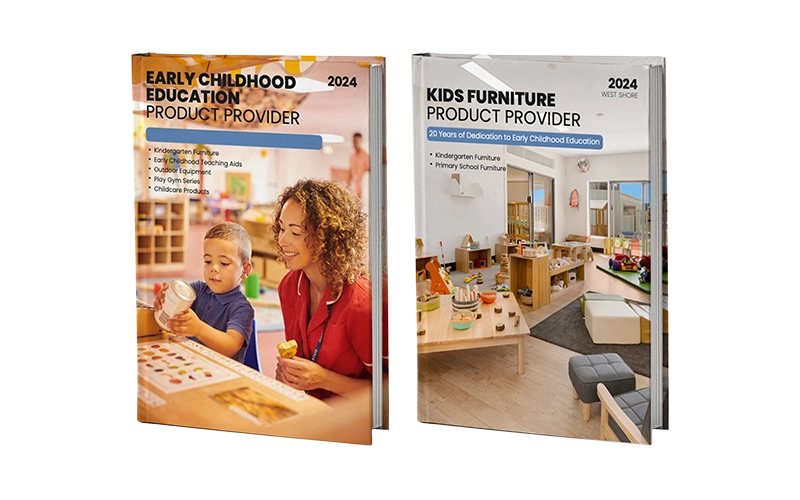Are you running or planning to run a home daycare? Worried about what might happen if a child gets injured on your property? Unsure what kind of insurance you need—or if you’re already violating regulations without knowing it? You’re not alone.
Home Daycare Insurance is not just a recommendation—it’s a legal and financial shield. Without it, you risk lawsuits, fines, license suspension, and harm to the children under your care. But with the right insurance, you can ensure legal compliance, protect your property, and keep your daycare doors open and thriving.
There’s a lot more to this than just ticking a box. So, let’s get into what Home Daycare Insurance covers, how to choose the right policy, and why you can’t afford to overlook it.
What Is Home Daycare Insurance?
At its core, daycare insurance is a business insurance explicitly tailored for childcare providers, particularly those operating from home. It covers the unique risks associated with caring for children, including accidents, injuries, property damage, and even legal allegations like negligence or abuse.

Home Daycare Insurance is a compliance tool and financial safety net for anyone running a home daycare. It bridges the gap between what your homeowner’s insurance covers and what’s required to legally and ethically run a business that involves caring for other people’s children.
Without it, you risk your business and finances with every child you welcome through your door.
Three Types of Home Daycare Insurance
When in the market for home childcare insurance, there are three distinct options you can choose from, depending on your coverage needs. These include:
- Liability insurance
- Homeowner’s Insurance
- Errors & omissions insurance
Liability Insurance
Liability insurance is the cornerstone of any Home Daycare Insurance policy. It covers injuries to children, parents, or visitors during daycare hours or on your property.
This type of insurance protects you against:
- Medical bills due to accidents
- Legal fees if a parent sues
- Settlements or court-ordered payments
- Damage caused by children under your care
Liability insurance gives parents peace of mind—and gives you the professional credibility you need to stand out in a competitive field.
Most states or provinces require this coverage as a licensing prerequisite.
Typical liability coverage limits range from $1 million to $2 million per incident.
Homeowners Insurance
Many first-time providers assume their homeowner’s insurance will cover everything.
Unfortunately, it doesn’t.
While this insurance covers your home and personal belongings, it typically excludes any business activity—especially one that involves liability from caring for others.
If a child gets hurt in your home, your homeowner’s policy will likely not cover the injury if it is related to your daycare operations. Worse, failing to notify your insurer that you’re running a business could cancel your whole policy.
Key points about homeowners insurance:
- It may cover personal property but not business property
- Excludes daycare-related injuries
- Can be invalidated if business activities are not disclosed
Errors and Omissions Insurance (E&O)
Errors and Omissions (E&O) insurance is also known as. While liability insurance covers physical incidents (like a child falling), Errors and Omissions (E&O) insurance is also known as professional liability insurance. While liability insurance covers physical incidents (like a child falling), E&O covers negligence or poor judgment claims.
Examples:
- A parent sues you for giving a child the wrong allergy-safe snack
- You’re accused of not supervising properly during a minor injury
- A licensing agency cites you for failing to follow local safety protocols
Even if the claim is false, you must hire legal representation. E&O covers your defense costs and any judgments.

Who Is Eligible for Preschool and Daycare Insurance?
Almost anyone running a childcare business can apply for preschool or home daycare insurance, but insurers typically consider these factors when determining eligibility:
Licensed Home Daycare Providers
This is the most common group. If you’ve obtained a license from your city, state, or provincial authority, you’re considered lower risk and more likely to receive affordable coverage.
Unlicensed Childcare Providers
In many regions, you can still obtain insurance even if you’re operating without a license—though premiums may be higher, and your coverage might be limited. Insurers often ask how many children you care for and your maximum daily capacity.
Montessori and Reggio Operators
If you’re running an educational-focused home program (e.g., using Montessori furniture, toys, and philosophy), you’re eligible for more customized coverage plans—often under the category of preschool insurance.
Childcare Centers and Co-ops
Larger daycare centers, shared spaces, and daycare co-ops are also eligible but will likely need commercial policies rather than individual home-based ones.
Eligibility Requirements May Include:
- Local business license or child care license
- Proof of first aid/CPR certification
- Health and safety plan
- Clean legal and criminal record

What Activities Does Preschool and Daycare Insurance Cover?
A well-structured Home Daycare Insurance policy covers a wide range of activities. Here’s what most comprehensive policies include:
Educational Play
This includes arts and crafts, educational games, early learning curriculum, and reading. If a child ingests non-toxic paint or chokes on a toy during play, your insurance will help cover medical or legal fees.
Indoor and Outdoor Playtime
Playgrounds, backyard slides, and sandboxes are fun but risky. One fall can result in broken bones or sprains, a common source of claims in home daycare insurance.
Meal Preparation and Feeding
Accidental allergic reactions, choking, or contaminated food issues are covered under professional liability if you’re deemed responsible.
Nap and Rest Periods
If a child rolls off a couch or gets tangled in bedding, your policy may cover any injury claims resulting from insufficient supervision.
Transportation (Optional Add-On)
You’ll need additional commercial auto insurance if you transport children to school, field trips, or parks. Some daycare policies offer this as an add-on or extension.
Behavioral and Emotional Support
Sometimes, parents claim their child suffered emotional or psychological stress during care. While rare, some E&O insurance policies extend coverage to include these accusations.

How Much Should You Spend on Home Daycare Insurance?
There’s no one-size-fits-all answer to this question. The amount you spend on home daycare insurance depends on several key variables—like the number of children in your care, local laws, and the level of protection you want for your business and personal assets. Below is a breakdown to help you determine what’s appropriate for your in-home daycare setup.
Evaluate Risks and Coverage Needs
Start by assessing the actual risks involved in your in-home daycare. Think about your physical environment, daily routines, and the age groups of children under your supervision.
Ask yourself:
- Do you have a backyard or play structures?
- Are you caring for infants, toddlers, or older kids?
- Do children nap or eat meals on-site?
- Are you transporting kids?
The more active or complex your environment, the more comprehensive your insurance for home daycare needs to be. For instance, offering transportation introduces a whole new level of liability, often requiring an auto insurance add-on.
Calculate Business Revenue
Your income directly impacts how much home daycare liability insurance you should carry.
If your daycare earns $40,000/year but you face a $100,000 lawsuit, your business could be wiped out overnight. In most cases, your home daycare insurance policy should cover 5 to 10 times your annual revenue, especially in liability claims.
It’s not only about protecting your current income—it’s about ensuring the long-term survival of your daycare.
State and Local Regulations
Where you operate significantly influences insurance costs and legal requirements. Some regions mandate specific coverage minimums for in-home daycare businesses.
For example:
- In California, providers must carry liability insurance or obtain signed waivers from every parent.
- In Ontario (Canada), licensed home daycares must have a minimum $2 million liability policy.
Failing to meet these legal insurance thresholds can result in:
- Hefty fines
- Rejection of daycare license
- Complete closure of your business
Always check with your local Department of Human Services or family childcare licensing board to verify what type of insurance for home daycare is mandatory.
Child Care Licensing – California Department of Social Services
Consider Business Size and Scale
The size of your operation has a direct impact on your insurance cost. Most home daycare insurance providers calculate premiums based on the number of children enrolled or the number of available slots.
- Small-scale daycares (3–5 kids): Usually qualify for basic policies costing between $400–$800/year.
- Larger operations (6+ children, additional staff) Require broader coverage, which may range from $1,000 to $2,000/year, depending on risk.
If your business employs assistants, offers preschool education, or provides transportation, your home daycare liability insurance must reflect those extra responsibilities.
Evaluate Deductibles and Premiums
Premium: What you pay yearly
Deductible: What you pay out-of-pocket before your coverage kicks in
Here’s the trade-off:
- Lower premium = higher deductible
- Higher premium = lower deductible
For example:
- A $600/year plan might have a $1,000 deductible
- A $1,200/year plan might reduce that deductible to $250
You’ll want to find a balance that fits your monthly cash flow and long-term protection goals.
Factor in Financial Protection
Think beyond the short term. Consider worst-case scenarios, like a severe injury or illness that leads to a high-value claim. Could your daycare survive a $150,000 lawsuit?
Ask yourself:
- Can I afford $50,000 in legal fees?
- What if I lose income while handling the case?
- What happens if my property is damaged in the process?
Probably not.
This is where a robust home daycare insurance policy becomes more than just a business formality—it becomes your financial safety net. Spending $1,000 annually for a $1 million coverage plan is one of the smartest investments you can make.
Additional Factors That Influence Cost
Other things that affect what you’ll pay:
- Whether you operate seasonally or full-time
- If you hold any credentials (Montessori, Reggio, etc.)
- Your claims history (have you ever had a lawsuit?)
- The insurance company itself (not all offer daycare plans)
- Optional add-ons like cyber insurance or food liability
Compare multiple insurance companies online to compare.
Conclusion
Operating a daycare out of your home is a rewarding yet high-responsibility business—and home daycare insurance is your first and best line of defense. Whether you’re just starting or expanding, having the right in home daycare insurance gives you legal protection, financial security, and peace of mind. Don’t treat insurance as an expense—treat it as an investment in the safety of the children you care for and your business’s future.
As you build your daycare space, choosing the right furniture and environment is just as important as choosing the right insurance. At West Shore Furniture, we’ve specialized in preschool furniture manufacturing and supply for over 20 years. From classroom design and custom furniture production to strict quality inspection and global delivery, we offer one-stop solutions tailored for daycare and early learning environments. If you want to create a space that’s as safe, functional, and inspiring as your business vision, we’re here to help.





